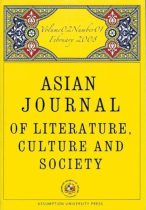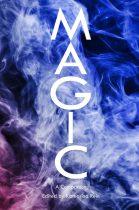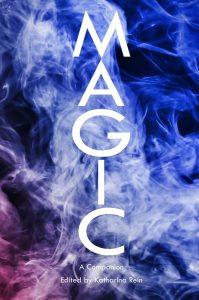2019
 The promotion of Asian Horror as a single marketable category arguably began at the turn of the millennium with the release of Hideo Nakata’s Ringu (1998) and Ringu 2 (1999), introduced to the world through the festival circuit. The long-haired vengeful spirit of Sadako Yamamura was hailed a ‘new’ figure of evil, critics welcomed the emergence of ‘J-horror,’ and film distributors rushed to cash in on the growing appetite for Asian ghosts and monsters. Originating in the novels of Koji Suzuki, Sadako is a character bound in a cycle of repetitions, appearing in five novels and seven movies to date in Japan (not counting manga and television series), spawning one Korean and three American remakes, and present as an instantly-recognisable pop-cultural reference in countless other productions. This brief discussion of Asian Horror will therefore focus on the novels and films of the Ring cycle and examine the evolution of Sadako as a representative ‘face’ of Asian horror.
The promotion of Asian Horror as a single marketable category arguably began at the turn of the millennium with the release of Hideo Nakata’s Ringu (1998) and Ringu 2 (1999), introduced to the world through the festival circuit. The long-haired vengeful spirit of Sadako Yamamura was hailed a ‘new’ figure of evil, critics welcomed the emergence of ‘J-horror,’ and film distributors rushed to cash in on the growing appetite for Asian ghosts and monsters. Originating in the novels of Koji Suzuki, Sadako is a character bound in a cycle of repetitions, appearing in five novels and seven movies to date in Japan (not counting manga and television series), spawning one Korean and three American remakes, and present as an instantly-recognisable pop-cultural reference in countless other productions. This brief discussion of Asian Horror will therefore focus on the novels and films of the Ring cycle and examine the evolution of Sadako as a representative ‘face’ of Asian horror.



 This article focuses on the four most significant Japanese Ringu movies, mapping out contemporary Japanese horror as a culturally-fostered response to the fear of chaos in the techno-centric orderly system. The representations of chaos, whether affecting spatial and temporal reality, psyche, or social structures can be seen in virtually every contemporary Japanese horror film, while technology re-emerges as a channel for the supernatural and a site of supernatural materialisation. Sadako Yamamura, Chaos personified, may serve as a perfect example of the above.
This article focuses on the four most significant Japanese Ringu movies, mapping out contemporary Japanese horror as a culturally-fostered response to the fear of chaos in the techno-centric orderly system. The representations of chaos, whether affecting spatial and temporal reality, psyche, or social structures can be seen in virtually every contemporary Japanese horror film, while technology re-emerges as a channel for the supernatural and a site of supernatural materialisation. Sadako Yamamura, Chaos personified, may serve as a perfect example of the above.
 Khmer magic holds a prominent place in Thai imaginary and is often portrayed in films. This article will discuss the most common portrayals of Khmer black magic in Thai popular cinema – from horror films to action and adventure genres. The main films discussed here will be the Art of the Devil trilogy (Khon len khong, 2004, Long khong, 2005, and Long khong 2, 2008), with references also made to such productions like Necromancer (Chom khamang wet, 2005) and Khun Pan (2016) and Khun Pan 2 (2018). The article argues that while the cinematic portrayals of Khmer magic provide opportunities to engage in a graphic spectacle of violence, their depictions are also consequently gendered, with female practitioners being labelled as ‘evil’ and male practitioners using magic to assert their masculinity.
Khmer magic holds a prominent place in Thai imaginary and is often portrayed in films. This article will discuss the most common portrayals of Khmer black magic in Thai popular cinema – from horror films to action and adventure genres. The main films discussed here will be the Art of the Devil trilogy (Khon len khong, 2004, Long khong, 2005, and Long khong 2, 2008), with references also made to such productions like Necromancer (Chom khamang wet, 2005) and Khun Pan (2016) and Khun Pan 2 (2018). The article argues that while the cinematic portrayals of Khmer magic provide opportunities to engage in a graphic spectacle of violence, their depictions are also consequently gendered, with female practitioners being labelled as ‘evil’ and male practitioners using magic to assert their masculinity.